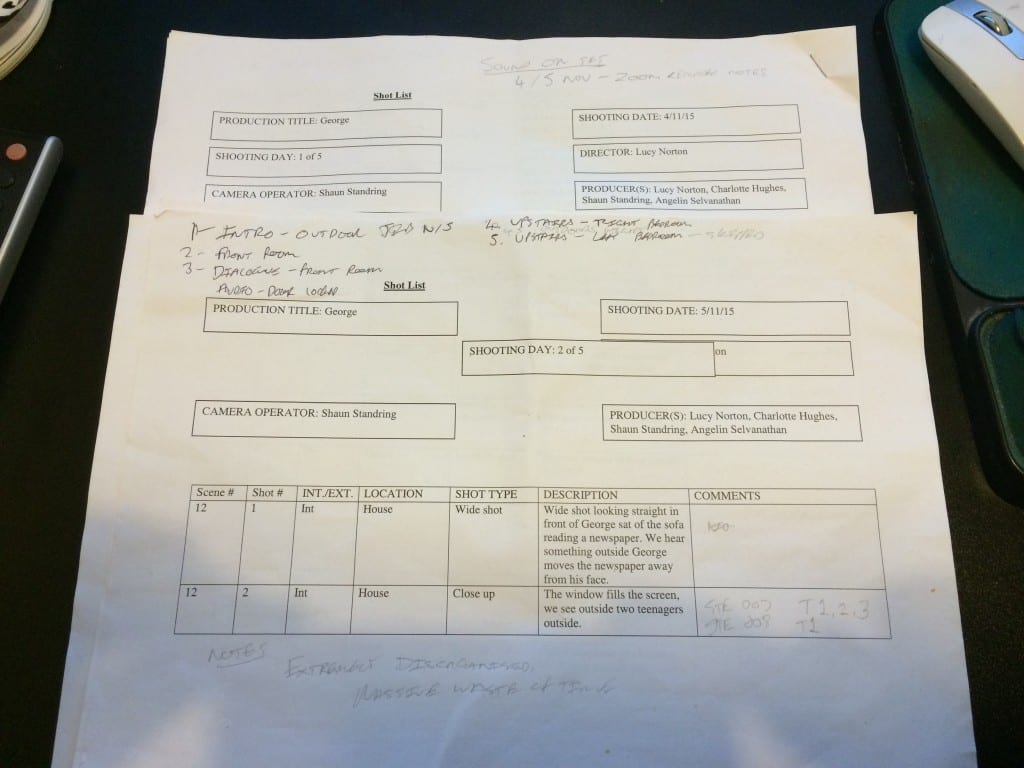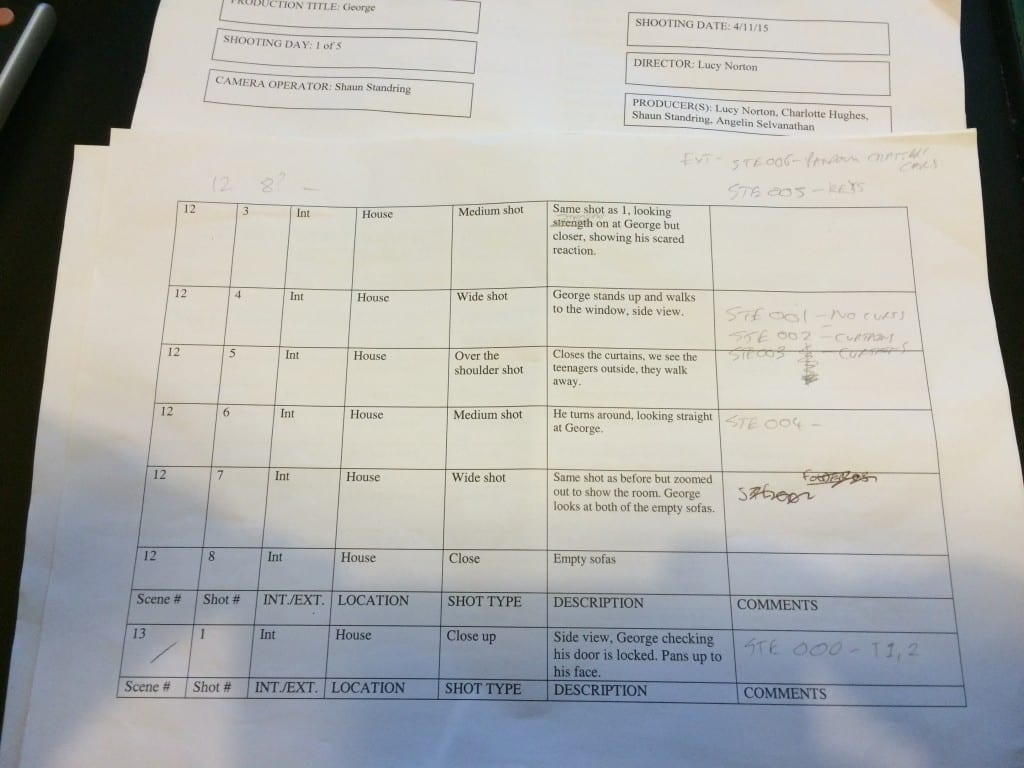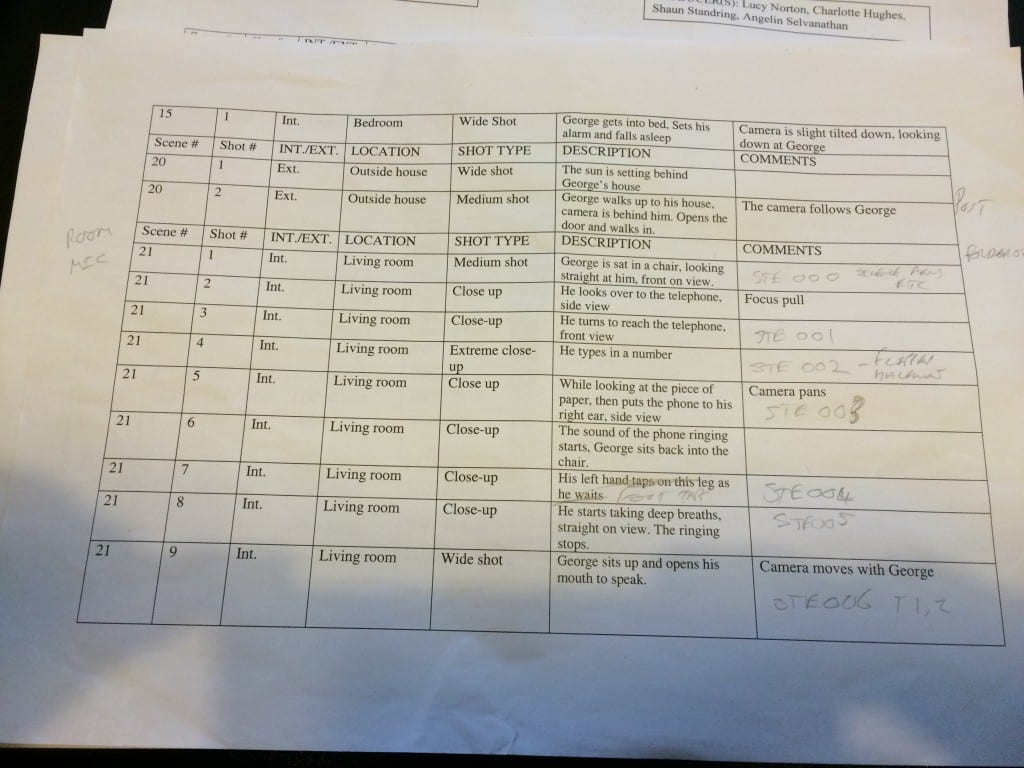“Good sound design enhances the listening experience, but doesn’t get in the way of the story.” – Eloise Whitmore
My role for the production of George is that of a Supervising Sound Editor. This is a hands-on role with involvement in the cutting and editing of dialogue, ADR, foley and special effects, as well as the oversight of the ‘deliverables’ for the film such as the various mixes required by the director, and making sure the mix meets any stipulated technical specifications. Responsibilities also extend to the sound budget, the work-flow and priorities of the sound team on the mix, and appointing and managing those responsible for each aspect of the post production editing.
“On the average A-picture the first post production sound person brought onto the film is the supervising sound editor, who not only directs and coordinates the creative contributions of the post-production sound staff but also must handle all the related administrative duties like scheduling mixes. The tendency is to bring the supervising editor on earlier and earlier. The main reason is the changing demands for sound in early screenings. This practice has engendered the greatest changes in the logistics of post-production sound in the last two decades,” – (FilmSound.org)
Liasing with the artistic leads on the film (usually the director) is critical to the role, and supervising sound editors often double as sound-designers, directing the overall artistic audio tone of the picture to a greater or lesser extent. Again, this aspect of the role is relevant to ‘George’, as I am partially responsible alongside my colleagues in translating the wishes of the director into a functional sound-script and ultimately into a working soundtrack.
This makes the role very variable based on the scale of the film in question, and in the case of ‘George’ – a zero budget student-film – I felt the creative liason, sound design and the hands-on editing would likely be the most relevant aspects. ADR, for example, was unlikely to be required for a script which has ended up containing very little dialogue yet had engaged the services of a full location audio team, and the audio team personnel and roles were largely dictated by our modules requirements.It also became clear during preproduction (based on the original institutional deadlines for the work, at least) that the audio work on this film would need to be directed carefully and, as the evident lack of concept and storyboarding came to light, the liason with the director particularly would need to begin as any possible headstart on the more complicated aspects of the sound design would be necessary in order to be able to condense relatively large requirements for a piece into a short period of time.
This is somewhat at odds with some conceptions of the role in the wider industry as it tends to begin at picture lock and the beginning of post production for films with little budget, but this is usually due to the constraints of said budget. Larger budgets enable longer contracts and more responsibilities and involvement for a supervising sound editor, and whilst ‘George’ has no budget it was possible to begin work on it early due to the institutional context.
Forward planning and preparation is absolutely critical in audio work of all stripes and especially in the relatively complex world of moving image with it’s many interlocking roles working in a production line sense towards the end product. In the context of my post production role, this is important when considering the necessity for ample source material to work with in the edit phase, and I wanted to participate in the location recording of this project partially to make sure we collected plenty of useful wild-track audio for later use in our atmospheres. This documentary on the film Australia opens with the Supervising Sound Editor / Designer Wayne Pashley discussing his work on the film, the set of which he was able to visit in order to capture the location sounds because ‘…there’s nothing like it’, referring to the unique nature of the sounds of the landscape in Australia. Whilst the locations for ‘George’ are not in anyway similar to that production, I think it would be useful to collect ambience for later use in a similar way.
I’ve examined some of the work of a couple of well known supervising sound editors, one that is relevant to George and another who concentrates mainly on sci-fi and the fantastic, which is my preferred own specialism, in the form of Richard King. The work he directed on Christopher Nolan’s Inception is a personal favourite, and I would love to try to weave some of the nuance of his work on that film into this one in some small way, specifically the discussion of ‘transitioning’ the audience into a dream sequence from this interview –
‘…we also altered the pitch of all the real-world sounds when we transition from level to level (much like the watch ticks change speed in the first sequence). So all the sounds slow and change and become a different sound in the next sequence – interior jet roar becomes traffic when we transition to the first dream level, for instance.’ – http://designingsound.org/
This interview also supports the notion above of recording as much as possible on set, though not at the cost to the impact of the audio, as King points out:
‘…It’s so important to get the sounds which you feel and imagine could be there. There’s always a lot of manipulation afterward of course, but recording new raw material is so important. I’d love to record everything every time, but the most important thing is to find the sound which provides that feeling you’re looking for regardless of where it comes from.’ – http://designingsound.org/
Richard King is soon to receive an MPSE career award for his contribution to cinema audio.
Mark Mangini’s work is discussed in this post covering the influence of Green Mile on the sound design of ‘George’.
—————————————–
– 1000 words
KEY POINTS –
Overview of supervising sound editor role – Research, Individual reflection on learning and team role.
- Assess the technical requirements of a production to inform the selection of appropriate tools, techniques and processes.
- Examine and implement professional practices in their production work in relation to professional contexts, clearances, ownership, copyright and commissioning.


